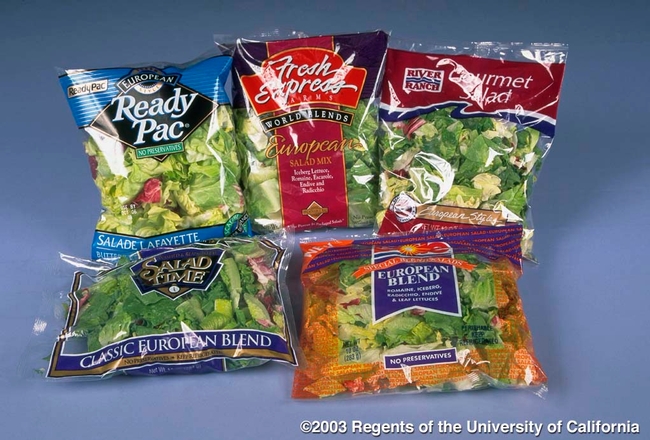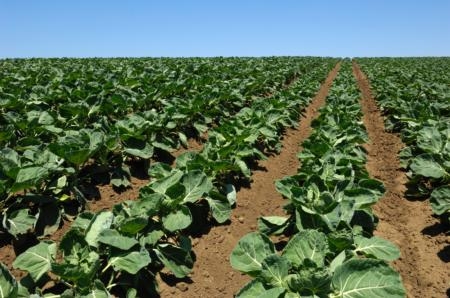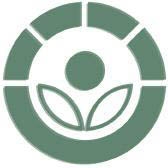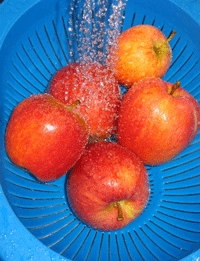Posts Tagged: Christine Bruhn
UC Davis study identifies risky food safety practices in home kitchens
The study, which examined preparation of raw poultry, found that the most common risks stemmed from cross contamination and insufficient cooking.
“The most surprising aspect of these findings to me was the prevalence of undercooking,” said Christine Bruhn, director of the Center for Consumer research at UC Davis, who authored the study. “We are now in summer, the peak season for foodborne illness, and these results come at a time when more consumers can benefit from being aware of better food safety practices. Even tips usually considered basic, like washing hands with soap and water before and after handling raw poultry, and never rinsing raw poultry in the sink, still need to be emphasized for a safer experience,” added Bruhn, a specialist in UC Cooperative Extension who studies consumer attitudes and behaviors toward food safety.
Most risks can be avoided by practicing thorough hand-washing, never rinsing raw chicken in the sink and using calibrated thermometers to determine that chicken is fully cooked. Researchers say these results will help narrow areas of focus and define important messages for food safety educators and advocates in their mission to promote safe food preparation.
The study analyzed video footage taken of 120 participants preparing a self-selected chicken dish and salad in their home kitchens. The participants were experienced in chicken preparation, with 85 percent serving chicken dishes in their home weekly, and 84 percent reporting being knowledgeable about food safety; 48 percent indicated they had received formal food safety training.
Cross contamination was of specific concern to researchers:
- Most participants, 65 percent, did not wash their hands before starting meal preparation and 38 percent did not wash their hands after touching raw chicken.
- Only 10 percent of participants washed their hands for the recommended duration of 20 seconds and about one-third of the washing occasions used water only, without soap.
- Nearly 50 percent of participants were observed washing their chicken in the sink prior to preparation, a practice that is not recommended as it leads to spreading bacteria over multiple surfaces in the kitchen. See the U.S. Department of Agriculture website: http://1.usa.gov/1licv0U.
Insufficient cooking was also observed:
- Forty percent of participants undercooked their chicken, regardless of preparation method and only 29 percent knew the correct USDA recommended temperature of 165 degrees Fahrenheit.
- Researchers observed that cooking thermometers were not widely used, with only 48 percent of participants owning one, and 69 percent of those reporting that they seldom use it to check if chicken is completely cooked. Most participants determined “fully cooked” based on appearance, an unreliable method according to the USDA. No participants reported calibrating their thermometers to ensure accuracy.
Based on the study's findings, a coalition of agriculture and food safety partners, including the California Department of Food and Agriculture, UC Davis, the California Poultry Federation, the Oregon Department of Agriculture, the Washington State Department of Agriculture, the Northwest Chicken Council, Partnership for Food Safety Education, and Foster Farms, are launching an educational campaign to increase consumer knowledge about safe food preparation practices in the home. The study was funded by contributions from Foster Farms.
“We all have an important role in ensuring food safety and preventing foodborne illness,” said Shelley Feist, executive director of the nonprofit Partnership for Food Safety Education. “Dr. Bruhn's research shows that some home food safety practices need to be reinforced with consumers. Proper hand-washing and the consistent use of thermometers are basic preventive actions that need to be part of all home food handling and preparation.”
California agriculture officials and representatives have been vocal in recent weeks about salmonella control at the ranch level.
“The California poultry industry has made great strides in reducing salmonella on raw chicken,” said Karen Ross, secretary of the California Department of Food and Agriculture. “However, even at this lower level, consumers still need to practice safe handling and cooking of raw poultry.” \
Ross recently recorded a public service announcement calling for more attention to safe handling and cooking for raw poultry and meats.
“The poultry industry takes its responsibility to produce a safe product very seriously, as evidenced by current food safety programs that are drastically reducing the incidence of salmonella,” said Bill Mattos, president of the California Poultry Federation. “At the same time, the research indicates that the consumer recognizes they also have a role in ensuring safety. This research provides a great opportunity to educate consumers with the most helpful information and tools to minimize risk and gives us a clear picture of what behaviors to focus on.”
The study's complete findings will be published in the September/October issue of Food Protection Trends. Consumers can find free downloadable information on home food safety at http://www.fightbac.org.
Re-washing bagged greens may do more harm than good
Re-washing bagged greens may be making salads dirtier, according to a bevy of food safety experts, reported Deborah Schoch in the Los Angeles Times.
Even the cleanest kitchens can teem with harmful pathogens - on cutting boards and in salad spinners, on knives that just sliced raw chicken, on damp, well-used cloth towels.
"In brief, consumers don't wash up very well and may contaminate produce due to dirty hands and dirty sink," emailed Christine M. Bruhn, director of the Center for Consumer Research at UC Davis. That's especially a problem with salad greens, since they never get cooked.
Schoch spoke to food experts from Kansas State University and the University of Maryland who also recommended pre-washed greens not be re-washed.
California apprenticeship building future producers
Amy Trinidad, Sheep Industry News
The American Sheep Industry Association is teaming up with the state sheep associations to expand the Let’s Grow initiative to include mentor programs for beginning sheep producers.
“There is a real movement as far as people wanting to get back to the land. In some ways, it’s like the 1960s and 70s, only with a whole bunch of bigger challenges,” says Roger Ingram, University of California Cooperative Extension farm advisor.
Shepherds need to know how to run animals in a variety of environments, be able to identify common and uncommon pasture and range plants, know range nutrition, identify potential poisonous plants, be able to quickly asses the health of the flock and be able to take the appropriate steps in field conditions to fix problems, Ingram said.
Mild winter shifts the start of the growing season
Heather Hacking, Chico Enterprise Record
The lack of rain has meant some Butte County almond growers have already irrigated twice, and some are starting a third run with the water. They would rather not water at all, and often don't need to this time of year, said Joe Connell, UC Cooperative Extension farm advisor.
It can cost about $40 to apply 12 inches of water to one acre, he said. Growers will think carefully before pumping if it looks like another storm is on the way. The most recent rain provided water to the first foot of soil, depending on the soil conditions. But almond growers will want the soil irrigated 3 to 4 feet down by bloom time.
Almond trees in the area will likely begin to bloom around Valentine's Day this year, about a week earlier than normal.
Yuba-Sutter beekeepers abuzz on research
Jonathan Edwards, Orland Press Register
Losing bees to colony collapse disorder is not good for Yuba-Sutter. Beekeeping brought in about $3.9 million to area beekeepers in 2010, the last year for which data is available. On average, beekeepers have lost nearly one-third of their colonies each year since 2006.
That number likely skyrocketed last year as dwindling colonies drove higher prices. A shrinking supply of vibrant hives nearly doubled the price of a colony, from $33 to $58 between 2009 and 2010, according to the Sutter County Crop Report. The price nearly tripled again and is holding at about $150 a colony, said Eric Mussen, an apiculturist with UC Cooperative Extension at UC Davis.
"It just shot up," he added.
Spinach safer five years after E. coli outbreak
Salinas Californian reporter Andy Stiny wrote a story on the 5th anniversary of the E. coli outbreak in spinach grown in San Benito County. He reported that Steve Koike, plant pathology farm advisor for Monterey County, said California's spinach industry is rebounding from the setback. Bonnie Fernandez-Fenaroli, executive director for the Center for Produce Safety at UC Davis, is quoted as saying, "A lot of research is going into all produce right now." The center has 54 produce safety projects under way. Christine Bruhn, a food marketing specialist and director of the Center for Consumer Research at UC Davis, said recent surveys show consumers are more concerned about meat products but 30 percent said they are concerned about produce safety. "We advise people to wash their sink and their hands, then wash produce in running water and dry with a clean paper towel," Bruhn told the reporter. "This reduces but does not eliminate bacteria."
UC Berkeley professor appointed to systemwide position
Sybil Lewis, The Daily Californian
UC Berkeley professor Barbara Allen-Diaz has been appointed University of California systemwide vice president for Agriculture and Natural Resources, reports the Daily Californian, the UC Berkeley student newspaper.
Could food irradiation prevent deadly infections?
In the wake of a catastrophic E. coli outbreak in Europe - blamed for more than 36 deaths - public dialogue about food irradiation has resumed in earnest. The recent European food safety epidemic, which linked a virulent strain of E. coli with bean and seed sprouts, was the worst in recorded history, according to Food Safety News.
An article in the Los Angeles Times over the weekend considered whether food irradiation could prevent such deadly infections. Food irradiation - which has been around for more than 100 years - involves exposing food to low-dose X-rays, electron beams or gamma rays. The high-energy particles kill disease-causing pathogens. The particles also break up water molecules in the food, releasing free radicals that can kill bacteria and parasites.
Times writer Elena Conis spoke to the director of the UC Davis Center for Consumer Research Christine Bruhn about the process. She said no radioactive materials end up in the food itself, even though, in the case of gamma rays, the source is radioactive cobalt. Electron-beam and X-ray irradiation involve no radioactive elements.
However, the FDA regulates irradiation as a food additive instead of a treatment process. As a result, all food treated with X-rays, electron beams or gamma rays must be labeled "irradiated," which is not appealing to consumers.
Critics of food irradiation raise a number of objections. They say that irradiation:
- Reduces the level of nutrients
- Is less effective against viruses, which are responsible for more cases of food-borne infections than bacteria
- Does not eliminate all bacteria from treated foods
- Doesn't prevent food contamination in the first place
Proponents argue that, while not foolproof, irradiation can be an effective food safety tool. The Times quoted a 2001 analysis in the journal Emerging Infectious Diseases which found that irradiating half of the meat and poultry consumed in the U.S. would prevent more than 880,000 cases of illness, 8,500 hospitalizations and 352 deaths a year. Similar studies for produce irradiation, the article said, have not been done.
Bruhn maintains a webpage with detailed information about food irradiation, including arguments in favor and opposed, irradiation history and popular myths.

Christine Bruhn believes food irradiation is a safe technology with numerous advantages for the consumer and the agricultural industry.
The more you know, the more careful you are
With a daughter soon to complete a degree in health safety, discussions of Salmonella, E. coli and the like sometimes arise as we sit around the dinner table. As an agriculturally focused family, we like to think we’re pretty savvy about the best way to handle our produce to keep it safe and tasty.
Some are very concerned about food safety. A gentleman phoned the Postharvest Technology Center a few months ago, and shared that he was very concerned about eating strawberries. He thought perhaps he should scrub each one with a soft toothbrush, and then soak them in a diluted chlorine bath.
Others are much less aware of food safety concerns, sometimes using cutting boards and knives interchangeably between raw meat and produce items, or other unsafe food handling practices.
Dr. Roberta Cook, a marketing and postharvest specialist affiliated with the center reported, “in 2008, 53 percent of shoppers interviewed in a national survey by the Food Marketing Institute, named ‘bacteria or germs’ as a serious health risk to their food, ranking it as their number one concern.” The produce industry and the U.S. Food and Drug Administration continue to work hard to establish safe procedures for every step between the farm and the market.
Dr. Linda Harris, a food safety specialist, and Dr. Christine Bruhn, a consumer food marketing dpecialist, also affiliated with the Postharvest Technology Center, offer the following concise steps for the safe handling of produce:
- In the grocery cart and at home, keep fruits and vegetables separated from raw meat, poultry, and seafood to prevent cross-contamination.
- Once at home, store all fresh-cut ready-to-eat prepared produce in the refrigerator to keep it cold.
- Wash all whole fruits and vegetables, including larger items like melons, just before preparation for eating. Cut out damaged (bruised, discolored) areas before eating.
- Before and after handling fruits and vegetables, make sure that your work area and utensils are clean and that your hands have been washed with hot soapy water.
- Fruits and vegetables should be washed under running water. Soaking them in water increases the opportunity for cross-contamination and is not recommended.
- Produce such as apples, cucumbers and melons that can be rubbed without damage should be scrubbed using clean hands or a clean scrub brush.
- Dry washed fruits and vegetables with clean disposable paper towels.
- It is not necessary to wash ready-to-eat prewashed and packaged fresh-cut produce. If you choose to rewash this type of produce, follow the instructions above. Always wash unpackaged prepared salad mixes under running water prior to consumption.
- Once cut or prepared, all fruits and vegetables should be refrigerated promptly. After serving, refrigerate leftovers within 2 hours.
Additional produce safety resources:
"How to Properly Wash your Produce" video by Dr. Christine Bruhn.
For more University of California information about the safe handling of fruits and vegetables:
UC Home Gardening, Preservation and Storage Publications
Safe Handling of Fruits and Vegetables (pdf)
Food safety brochure (pdf)





